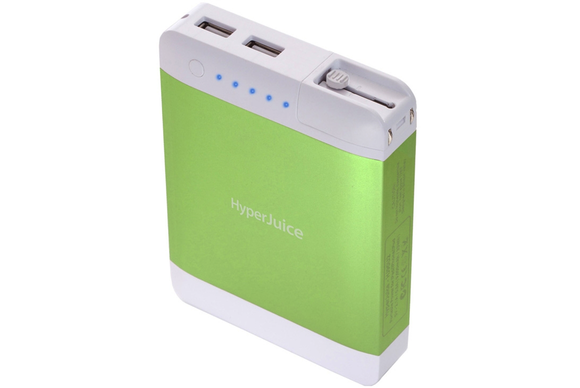
It takes a lot of power to light up an iPad’s 9.7-inch screen—and even more to power the fourth-generation model’s Retina display.
That’s why the device is packed full of battery capacity—an impressive 11,560 milliampere hours’ worth for the latest model. But although our battery tests have shown that, under heavy use, the fourth-generation iPad can last for more than 9 hours on a single charge, sometimes you need even more juice.
Whether you’re exploring the great outdoors or enduring a power outage, a portable charging device—that is, a big battery—can come in handy when electrical outlets are either unavailable or, as is often the case, not functioning. Portable batteries can also charge your smartphones, media players, and other mobile gear that charge over USB.
We recently put nine such devices through their paces and found that while all could help in a pinch, only one could provide a full recharge of a fourth-generation iPad.
What to look for
You should keep an eye out for several things when you’re shopping for a portable charging device, including capacity, convenience, and cost. If you’re seeking a portable charger that offers the greatest amount of juice for your iPhone, iPad, or other USB-charged device, look first at battery capacity, measured in milliampere-hours. The batteries we tested range from 6000 mAh to 16,000 mAh.
The downside is that higher-capacity batteries are generally larger and heavier than lower-capacity models. If you’re packing light, adding a 1-pound charger to your bag may not be wise. Similarly, the higher capacity a portable battery has, the longer the battery itself takes to charge: Some need as long as 14 hours, requiring you to leave them plugged in all night.
Many portable batteries can charge over a Micro-USB cable, eliminating the need to pack another power supply. (They’ll charge more quickly with your iPad’s power adapter, or another dedicated USB charger, than with a computer’s USB port, but either will work.) Some, however, require a particular AC adapter, which is less convenient. A few have AC plugs built in, so you need nothing but an electrical outlet to fill them up.
iSound Portable Power
Despite the name of its vendor, iSound, the $90 Portable Power (3 of 5 rating) does not have built-in speakers. But with a battery capacity of 8000 mAh, the iSound Portable Power offers a good amount of charging power; and with five USB ports, it can accommodate more devices than most of the other batteries we tested. At 3.5 by 3.3 by 1.0 inches, the 8.2-ounce, squarish Portable Power is almost identical in size to Apple’s older 85W MacBook Pro power adapters.
Unlike most of the chargers in this roundup, the Portable Power comes with, and requires, its own power adapter for charging, which is much less convenient than charging via USB. Interestingly, this iSound battery also has a built-in LED flashlight, which I suppose might come in handy when you’re searching in your bag for that extra power supply you had to pack.
In our tests the Portable Power took around 7 hours to charge fully; it charged our dead fourth-generation iPad to 53 percent of its capacity in 2 hours, 45 minutes before running out of juice.
Note that what you plug into the five USB-charging ports matters: For example, you can connect an iPad and one smartphone, or five phones but no iPad. If you try to add a second phone with the iPad, however, the LEDs on the Portable Power start flashing, and all devices stop charging until you cycle the device’s power button.
iSound Portable Power Max
With a massive 16,000-mAh capacity, the $130 Portable Power Max (3 of 5 rating) was the only portable battery in this group that was capable of fully charging our dead fourth-generation iPad. We were even able to plug in a second iPad and charge that by a small percentage before the Portable Power Max died. The drawback to having so much capacity is that charging the battery itself took forever—nearly 14.5 hours! The Power Max is also relatively large at 5.8 by 3.3 by 1.0 inches, and it weighs 14.6 ounces.
Like its smaller sibling, the Portable Power Max requires the included (and inconvenient) AC adapter to charge. And also like the standard Portable Power, the Max’s five USB ports can’t handle a lot of power-hungry devices: If you’ve connected a full-size iPad to it, adding more than one smartphone stops the charging altogether until you toggle the battery’s power button off and on. (As with the smaller Portable Power, we were able to connect phones to all five USB ports without overloading the battery.)
Just Mobile Gum Max Duo
If you like your mobile chargers with a splash of color, Just Mobile’s $130Gum Max Duo (3.5 of 5 rating) offers optional rubber sleeves in red, blue, and yellow to cover its aluminum and black surfaces. The Gum Max Duo, which charges via an included Micro-USB cable, offers 11,200 mAh of power, weighs 9.7 ounces, and is 4.3 by 3.2 by 1.1 in size.
The “Duo” in the product’s name refers to the battery’s two USB-charging ports, one providing 2.4A (for iPads) and the other 1A (for phones, iPods, and other lower-power devices). We were able to charge the Gum Max Duo, using Apple’s iPad charger, in a leisurely 13 hours, 14 minutes. When fully charged, the battery charged our fourth-generation iPad to 75 percent of full capacity.
Lenmar Helix Power Bank
According to Lenmar’s curious zombie-themed marketing materials, the $100, 11000-mAh Helix 11000mAh Portable Power Pack(3.5 of 5 rating) can help you revive your dead portable devices, making them “undead.” The Power Bank has four green “eyes” (really just status LEDs showing the remaining charge, but I’m playing along with the zombie theme here). The 4.7-by-3.1-by-0.9-inch battery weighs 9.1 ounces and sports three USB-charging ports: two 1.1A ports for charging phones, plus one 2.1A port for higher-draw devices such as the iPad. Unlike the iSound Portable Power, the Helix Power Bank can charge two phones and one iPad simultaneously.
You charge the Power Bank itself using the included Micro-USB cable. Plugged into Apple’s 10W iPad USB charger, the Lenmar model took 6 hours, 49 minutes to reach its maximum charge. It then charged our dead fourth-generation iPad to 70 percent of full. Warning: Do not overcharge or drop the device, or the resulting zombie apocalypse will be your undoing.
Mophie Juice Pack Powerstation Duo
Like several other batteries here, Mophie’s $100 Juice Pack Powerstation Duo (3 of 5 rating) can charge two devices at once. About the length and width of an iPhone 4, but twice as thick, the Powerstation Duo is the smallest and lightest charger of the group, measuring just 4.3 by 2.3 by 0.8 inches and weighing only 6.5 ounces.
The reason for this svelte size is that the Powerstation Duo has a capacity of merely 6000 mAh, and unsurprisingly it gave us the weakest charging result in this roundup: It restored our fully drained fourth-generation iPad’s battery to just 39 percent before running out of power itself. On the bright side, charging the Powerstation Duo didn’t take terribly long, requiring just 6 hours, 10 minutes using Apple’s iPad USB power adapter.
Mophie Juice Pack Powerstation Pro
Mophie’s $100 Powerstation Pro(3.5 of 5 rating) is the Powerstation Duo’s bigger, tougher sibling. (Technically, it’s the ruggedized version of the $80, non-Duo Powerstation.) The Pro comes clad in a shock-absorbing, thick-rubber bumper attached by six screws. Covering the sides, corners, and bottom, the bumper protects the battery’s USB ports from shock and water. The bare top face of the battery shows four status LEDs along with the Mophie logo.
The case adds a bit of bulk—the Pro is slightly larger than the Duo, at 4.5 by 2.7 by 1.0 inches—but at just 7.1 ounces, this model is the second-lightest device we looked at. It has the same battery capacity as the Duo, at 6000 mAh, but it can charge only a single device at a time. The Pro charged itself quickly, taking 5 hours, 45 minutes to reach its full charge, and it charged our drained fourth-generation iPad back to 42 percent of full before running out of power itself. Unlike many of the other portable battery chargers, the Powerstation Pro has built-in overcharge protection.
New Trent iCarrier IMP120D
The $70 iCarrier Heavy Duty Dual USB 5V/3A charger, model IMP120D (3 of 5 rating), is the least-pricey charger in this roundup, yet with 12,000 mAh, it has one of the highest capacities. It measures 3.9 by 3.6 by 1.1 inches and weighs 10 ounces.
Like the iSound models, the iCarrier loses points for requiring its own AC adapter to charge itself. We also didn’t like the battery’s failure to make obvious to us which of its two USB-charging ports will support an iPad. (The ports are labeled Output 1 and Output 2, with the power output of each noted only in small print on the bottom of the device.) The iCarrier took 9 hours, 10 minutes to charge, after which it was able to charge our iPad to 75 percent of capacity.
Sanho HyperJuice Plug 10,400mAh
While some portable chargers use a Micro-USB cable to charge, and others rely on an inconvenient AC adapter, Sanho’s $130 HyperJuice Plug 10,400mAh (3.5 of 5 rating) eliminates the need for charging cables by having the plug built right in. Simply pop out the two-prong plug and stick it in a standard AC wall outlet, and you’re filling up the HyperJuice Plug’s 10,400 mAh battery. The Plug is a little bulkier than most of the chargers we evaluated, at 4.8 by 3.4 by 0.8 inches, and it weighs a substantial 11.6 ounces.
Many two-port chargers have one 2.1A USB port for iPads and one 1A port for smartphones and similar devices. The HyperJuice Plug is smart enough to recognize which port is drawing more power and to adjust accordingly: Plug an iPhone into either port, and the battery outputs 5W; plug an iPad in, and it gives that port 10W. You can even use the HyperJuice Plug with two iPads—it will automatically give each USB port 7.5W. Available in a wide variety of colors, the HyperJuice Plug 10,400 mAh took 7 hours, 51 minutes to charge up, but the battery loaded our drained iPad to 61 percent of capacity before calling it quits. The HyperJuice Plug also offers built in protection against overcharging and overheating.
Sanho HyperJuice Plug 15,600mAh
For $30 more, the larger HyperJuice Plug 15,600mAh (3.5 of 5 rating) offers 50 percent more battery capacity than its similar-looking sibling. At a hefty 16.8 ounces, this version of the Plug was the only battery in the roundup to weigh more than a pound. At just over 6 inches in length (but otherwise the same dimensions as the 10,400-mAh version), the HyperJuice Plug 15,600 mAh is also the longest product in the roundup. Like its sibling, the Plug 15,600 mAh has a built-in retractable plug, eliminating at least one cable or charger from your packing list. The battery charged up in 8 hours, 16 minutes, and it charged our drained iPad to 95 percent.
Bottom line
No single portable charging device will suit anyone. People who travel light and are looking to add the least amount of weight and bulk to their carry-on bag should consider Mophie’s Juice Pack Powerstation Pro. It’s small and light, but rugged; it charges quickly over Micro-USB; and it will deliver several additional hours of life to your iPad. If you value power over portability, the HyperJuice Plug 15,600mAh is one of the highest-capacity batteries here. It can handle two iPads at a time, and its convenient built-in plug means that you won’t need additional cables or adapters to recharge the battery itself.

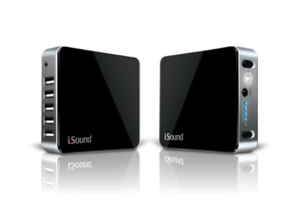
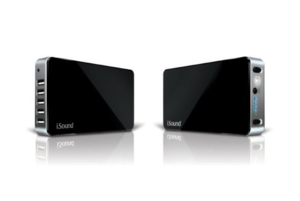
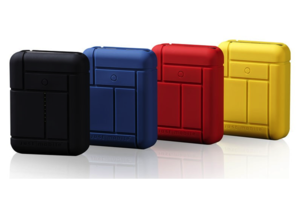
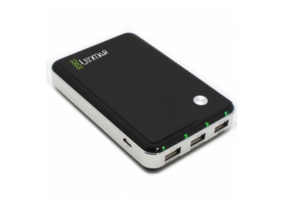
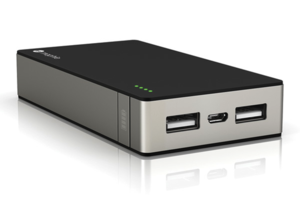
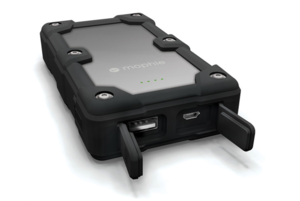
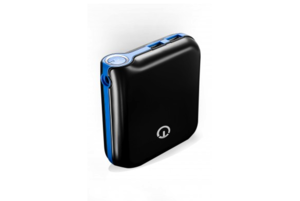

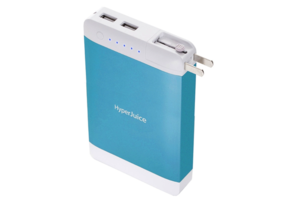
No comments:
Post a Comment